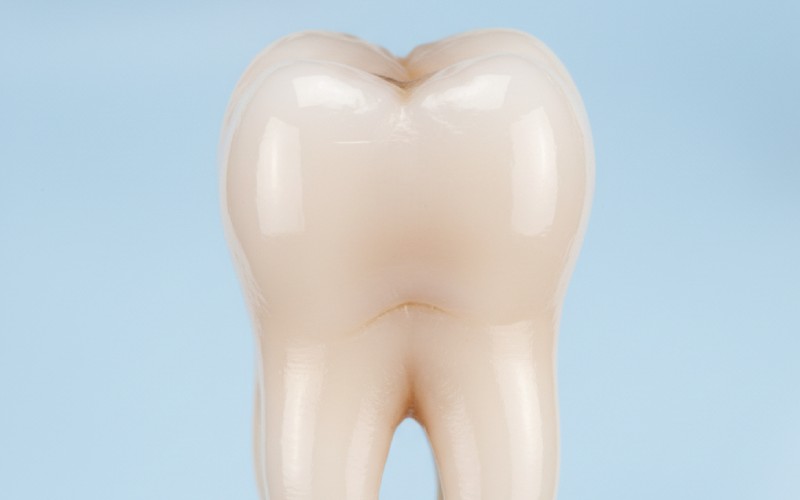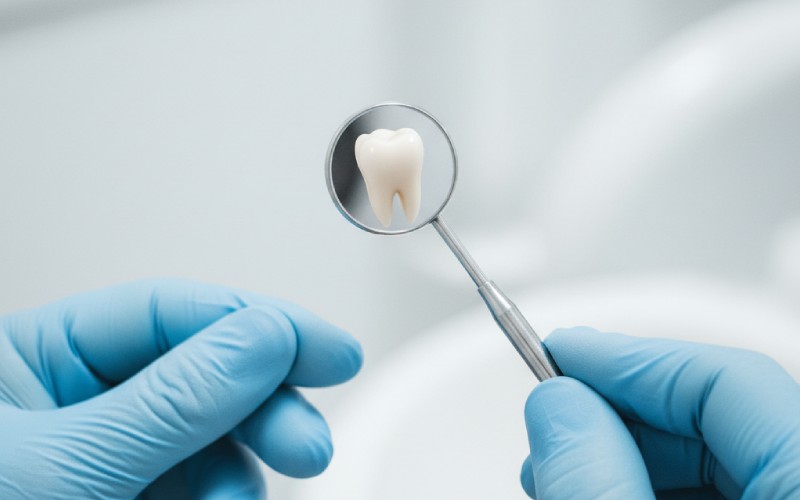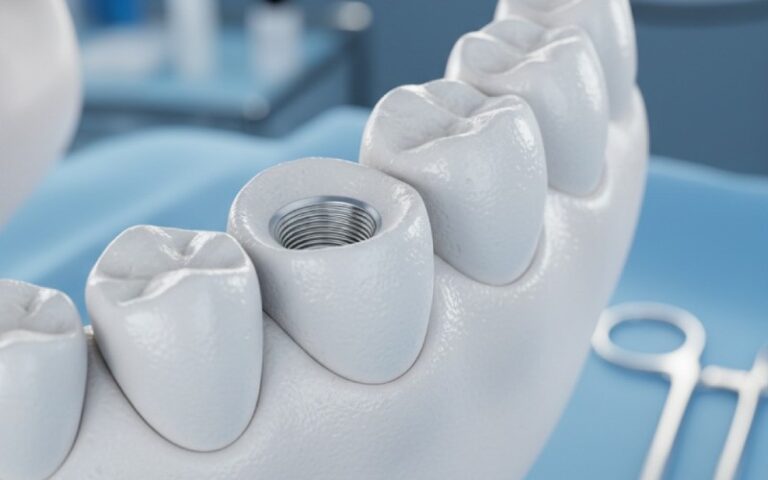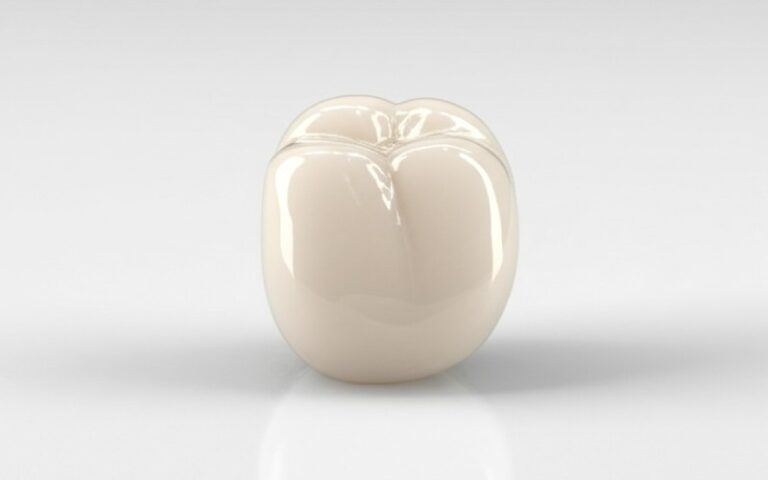
How Dentists Fix Cavities: A Simple Guide to the Cavity Filling Process
A trip to the dentist can be a little scary if you are not sure what is going to happen. Hearing that you have a cavity might make you feel worried. But dentists fix cavities all the time. They use a simple process for filling them. This is called a cavity filling. This article will show you step-by-step how a dentist does a filling a cavity. We will explain every step in easy-to-understand words. Reading this will help you know what to expect, feel less scared, and help you take better care of your teeth.
Indice dei contenuti
What Is a Cavity and How Do Cavities Form?
A cavity is just a tiny hole in your tooth. These holes in the teeth are a kind of damage. This damage comes from tooth decay. Tooth decay begins when germs in your mouth create acid. These tiny germs, called bacteria, feed on sugars and starches from the food you eat. As they eat sugar, they make acid. This acid is powerful enough to wear down the hard, outside layer of your tooth. This layer is called tooth enamel.
When acid stays on your teeth for too long, it can make a soft spot on the enamel. If this tooth decay continues, it makes a cavity. At first, a cavity is very tiny. You might not even feel that you have a cavity. But after a while, the decay can go deeper into the tooth. This is how cavities develop. A cavity can become bigger and create problems. This is why brushing your teeth is a very big deal. It helps wash away the food particles and bacteria that lead to the decay that forms a cavity. Even baby teeth can get a cavity, so it is important to take care of them, too. A cavity in a back tooth, like a molar, happens a lot.

Why Is It So Important for Dentists to Fill Cavities?
It is super important for a dentist to fix a cavity. If you do not fix a cavity, the decay will not go away on its own. The hole will just get bigger and deeper. The decay will move farther inside the tooth. This can cause a bad tooth pain, and the tooth could get infected. You could even lose the tooth completely. A filling is what stops the decay from getting worse. When a dentist puts in a filling, they are helping to save your tooth.
A dental filling helps make the tooth strong again. It plugs the hole so you are able to chew your food with no pain. A filling also helps protect the tooth from more decay in the future. Dentists treat a cavity with a filling to help keep your mouth in good health. If you ignore a cavity, it can turn into bigger and more painful problems down the road. This is why it is smart to get a filling as soon as your dentist spots a cavity. The main idea of filling a cavity is to fix the small problem before it turns into a big one.
What Are the First Steps in the Process of Filling a Cavity?
When you visit your dentist, the first thing they will do is look closely at your teeth. The dentist will assess your teeth to look for any signs of a cavity. They might use a little mirror and a special tool to check each tooth surface. If the dentist finds a spot that looks like a cavity, they might take an X-ray picture. The X-ray lets the dentist see how deep the decay has gone. This picture helps them know for sure if you need a cavity filling.
If you do need a filling, the next thing to do is make sure you are comfortable. A lot of people worry about pain during the procedure. To prevent this, the dentist will use a medicine called a local anesthetic. This is a numbing medicine that will numb the area around the tooth. Your dentist will gently give you a shot of this medicine near the tooth affected by the cavity. The shot may feel like a quick pinch. Soon after, the whole area around the tooth will feel numb. This means you will not feel any pain while the dentist works on your cavity.
How Does a Dentist Prepare the Tooth for a Dental Filling?
As soon as your mouth feels numb, the dentist is ready to start fixing the cavity. The most important part of the job is to remove the decayed portion of the tooth. To do this, dentists use a small tool which is called a dental drill. The drill spins very fast. It gently cleans out all the soft and brown parts of the decay. This might sound a little scary. But you will not feel it because the anesthetic has made the whole area numb.
The dentist is very careful during this step. They only remove the decayed areas. They want to keep as much of the healthy tooth structure as they can. When all the decay has been removed, the dentist will clean the hole very well. This makes sure that no germs are left inside. The tooth is now clean and ready to get the filling. Getting the tooth ready is a very important part of the filling process. It helps make sure the filling will last a long time and will fix the cavity for good.
What Is the Cavity Filling Process Really Like?
After the tooth is clean and has no decay left in it, it is time for the filling itself. The cavity filling process is when the dentist fills up the hole that the cavity made. The dentist will pick a certain kind of filling material. Two popular kinds are amalgam or composite resin. If your dentist uses a composite material, they will add it to the hole in thin layers. After they add each layer, they will shine a special blue light on it. This light makes the composite resin get hard in just a few seconds.
Your dentist works like an artist. They will carefully shape the filling so it looks and feels just like your natural teeth. The filling has to fit perfectly. This way, you can bite down and chew like you normally do. After the filling is hard and has the right shape, the dentist will polish it. This step makes the filling very smooth so it will feel nice in your mouth. This whole procedure is usually done very quickly. Now the cavity is gone, and your tooth is healthy and strong once more.
What Kinds of Filling Material Does a Dentist Use?
Dentists have a few different kinds of materials they can use for a cavity filling. The best choice for your cavity is based on where the cavity is in your mouth and how big the hole is. Your dentist will help you pick the best one.
Here are the most common kinds of filling materials:
| Tipo di materiale | Looks Like | Where It’s Used | Quanto dura |
|---|---|---|---|
| Resina composita | Tooth-colored. It blends in. | Great for front teeth or teeth people can see. | 5 to 10 years |
| Amalgam (Silver) | Silver or gray in color. | Good for back teeth like a molar. | Last 10 to 15 years or more |
| Porcelain Fillings | Tooth-colored. Very tough. | Can be used on any tooth. | 10 to 15 years |
| Glass Ionomer Fillings | Tooth-colored. It gives off fluoride. | Often used for cavities in baby teeth. | About 5 years |
Composite fillings are used a lot because they look like real teeth. Amalgam fillings are very strong. Dentists have used them for many years. Porcelain fillings are both strong and look good, but they often cost more. Your dentist will talk with you about the right choice for your dental health and for the special cavity you have. Some fillings require special care.
Will Getting a Cavity Filling Hurt?
This is the most common question people ask about getting a filling. The great news is that a cavity filling should not be painful at all. Before the dentist starts any work on the cavity, they numb the area. They use a local anesthetic to make sure the tooth and the gums around it are totally numb. You will not be able to feel the dentist as they clean out the decay or put in the filling.
You might feel a small pinch when the dentist gives you the shot of anesthetic. After that, you should feel no pain. You will feel some pressure and a little bit of shaking from the tools. You will also hear the sound of the dental drill. But it should not hurt. If you feel anything at all, you should tell your dentist as soon as it happens. They can give you more medicine to make sure you are feeling fine. A good dentist wants to make sure your time getting a cavity filling is as easy and comfortable as it can be.
What Should I Do After Filling a Cavity?
After your cavity filling procedure is all done, your mouth will stay numb for a couple of hours. Be very careful not to bite your cheek or your tongue while you can’t feel them. Your dentist will likely tell you to stay away from eating or drinking anything hot until the numbing feeling goes away. It is also a smart idea not to chew on the side with the new filling for the rest of the day, just to be on the safe side.
In the days following the procedure, your tooth might feel a little tender when you eat or drink hot or cold things. This is very normal. It should go away in about a week or two. If your bite feels a little “high” or not even when you bite down, you should contact your dentist. They might need to make a small change to the filling. Taking care of your new filling is easy to do. Just keep up with good oral hygiene. This means you should keep brushing and flossing just like you always do.

How Do Fillings Prevent Future Decay?
A filling does much more than just fix a hole. Fillings prevent new decay from starting in that same tooth. A cavity makes a weak spot in a tooth. It is a place where food particles and bacteria can get stuck easily. This makes the decay grow even faster. By cleaning out all of the decay and closing the hole with a filling, the dentist makes a strong wall. This wall helps keep germs and food from getting into the soft inside parts of the tooth using the new filling.
A filling helps build the tooth structure back up. It makes the weak, damaged portion of the tooth strong once again. This helps the tooth handle the pressure from chewing food. So, you can think of a dental filling as both a fix and a shield for your tooth. It stops the cavity you have now. It also helps prevent future problems from happening in that same spot. This is the main reason why dentists fill cavities—to help protect your tooth for many years.
How Can I Prevent Future Cavities?
The very best way to handle a cavity is to not get one in the first place! There is a lot you can do to prevent cavities. Having good oral health habits is the most important thing. Your goal should be to keep your enamel strong. You also want to clean away the germs that make acid. Dentists may also tell you about other ways to help prevent future cavities.
Here are some of the best ways to prevent future cavities:
- Brush your teeth two times a day. Brush for two minutes each time. Be sure to use a fluoride toothpaste. Fluoride helps make your tooth enamel much stronger.
- Floss your teeth every single day. Flossing helps clean in between your teeth. A toothbrush can’t reach these spots, where a cavity often starts.
- Eat less sugary foods and drinks. The less sugar the germs in your mouth can eat, the less acid they will be able to make.
- Visit your dentist for regular checkups and cleanings. Your dentist can find a cavity when it is still very small and easy to fix.
- Ask your dentist about getting dental sealants. Sealants are a thin, plastic coat. They are painted on the chewing surfaces of molars and premolars to prevent decay.
By taking these simple steps, you can lower your chances of ever getting another cavity. A healthy mouth is a happy mouth!
Punti chiave da ricordare
- A cavity is a hole in a tooth that is made by decay from germs that make acid.
- Dentists fill cavities to stop decay, save the tooth, and keep you from having pain.
- The cavity filling process includes numbing the tooth, cleaning out the decay, and then filling the hole with a special material.
- Getting a filling does not hurt. This is because your dentist uses a medicine called an anesthetic to make your mouth numb.
- There are several kinds of filling materials. These include tooth-colored composite resin and strong silver amalgam fillings.
- You can prevent future cavities by taking good care of your teeth. This means you should brush with fluoride toothpaste, floss, and see your dentist for regular checkups.




